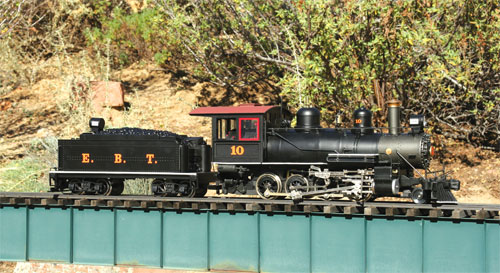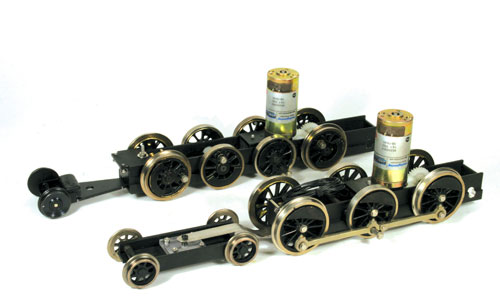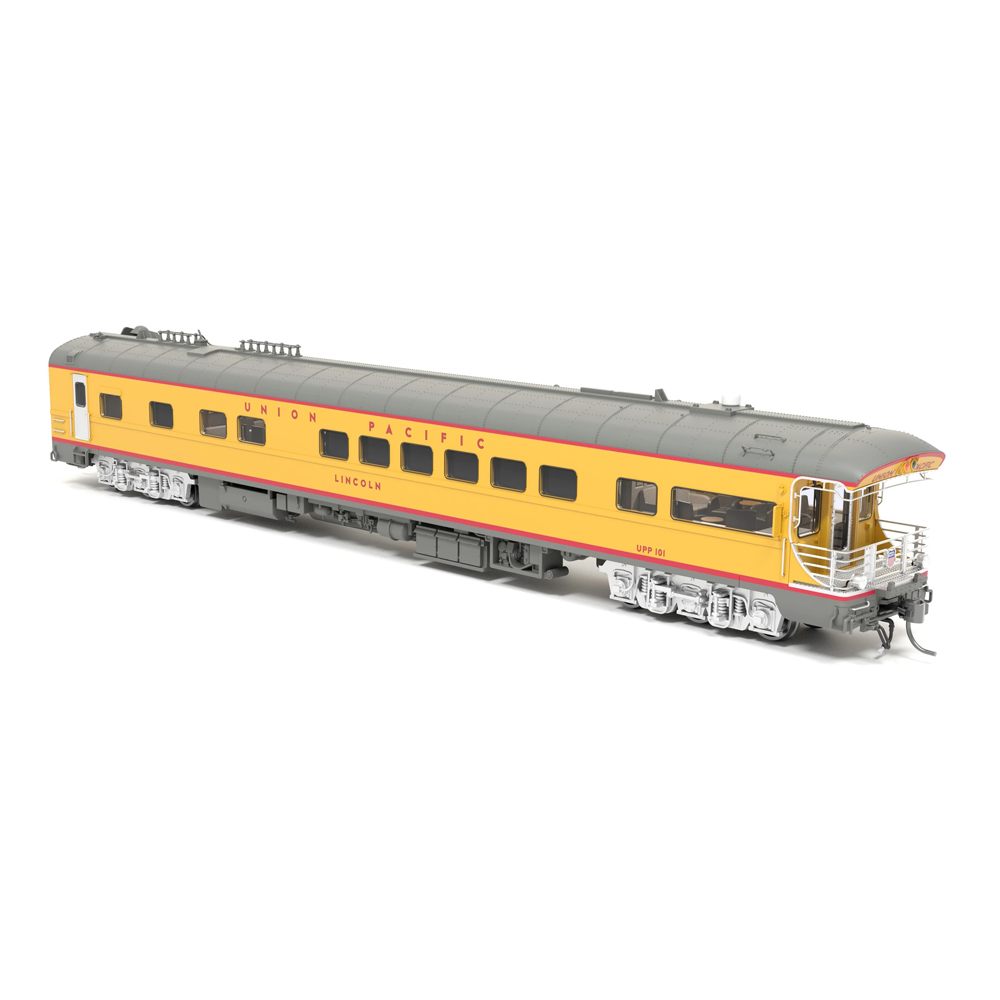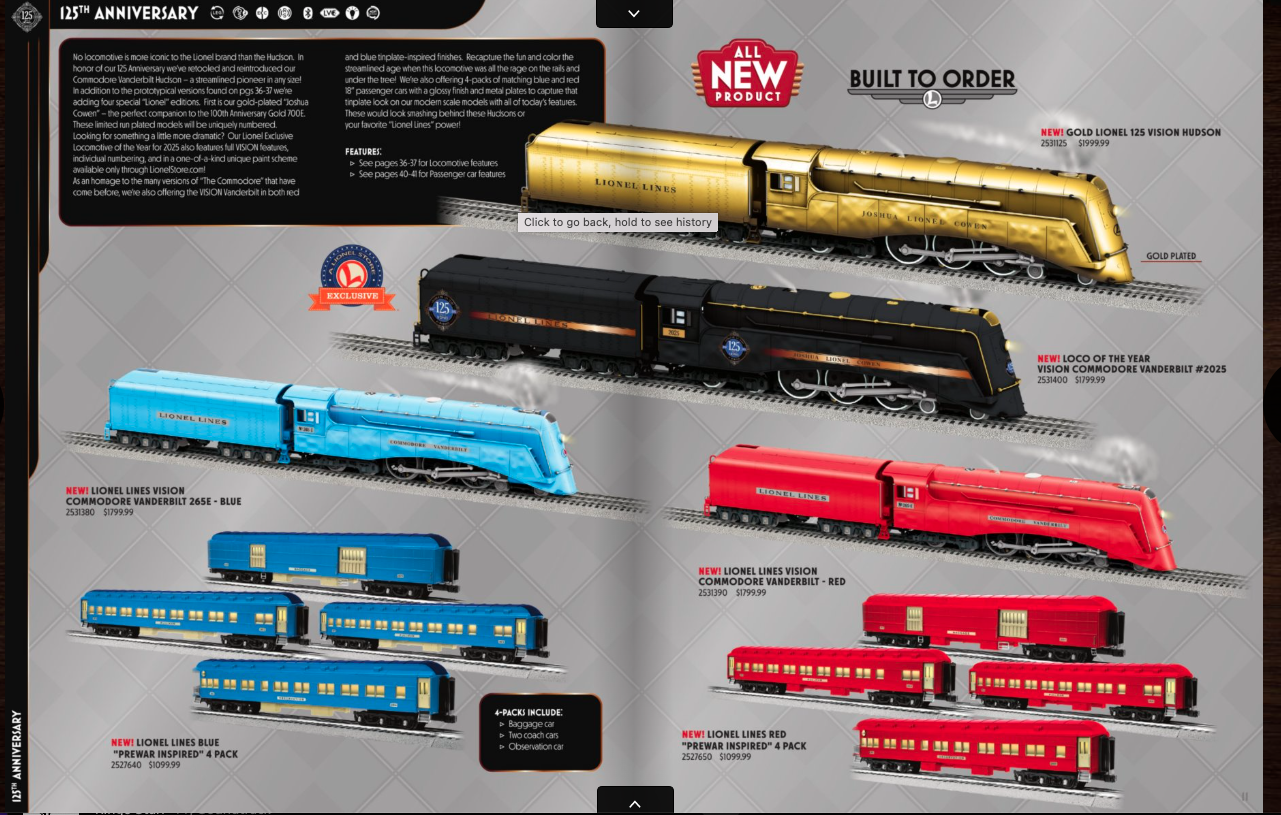Replacement drives for Bachmann 4-6-0s
Barry’s Big Trains
PO Box 1119
Tolleson AZ 85353
Contact the builder for pricing
Web site: www.barrysbigtrains.com
Replacement drive units for a variety of different Bachmann 4-6-0 locomotives; conversions offered for 4-6-0s or 2-8-0s;Pittman seven pole, ball-bearing motor; ball bearings on flanged-driver axles; anodized aluminum frames; vertical motor mount; 29.8:1 countershaft gear drive to minimize surging on downgrades; reed “chuff” switch in 4-6-0 chassis; articulated side rods for 2-8-0; available as a kit to retro-fit your model or as a complete, ready-to-run locomotive. Tractive effort on review sample: 1 lb. 11 oz., equivalent to about 22 average freight cars on straight, level track
Pros: Robust construction; good tractive effort; very smooth running; outstanding slow-speed operation; reasonable top speed; strong motor; stout gears
Cons: Plate frames-would like to see more open, US-style bar frames
Sent for review were two chassis-a 4-6-0 and a 2-8-0-along with a Bachmann locomotive that had been converted using the company’s “Annie” 2-8-0 chassis (“Annie” comes from Bachmann’s 10th anniversary locomotive). The converted locomotive is the one we tested, using the two chassis as reference.
The original Bachmann 4-6-0 is now a good-looking 2-8-0. The drivers have blackened, cast-brass centers with stainless-steel tires. The front axle is equalized for better tracking. A new, all-metal pilot truck with blackened wheels has also been installed. The engine features three-piece articulated siderods and blackened, extruded-aluminum frames. Herein lies my only complaint about this product. American locomotives of this vintage had bar frames, which gave them a lighter, see-through quality. With these plate frames, that quality is gone. However, this is a minor quibble.
The engine is powered by a Pittman seven-pole motor, mounted vertically and geared to the axle through a jackshaft, or countershaft, with a gear ratio of 29.8:1. According to the company’s literature, the use of the countershaft prevents surging when coming downhill with a train. Construction is first rate, with all of the black-anodized aluminum parts being neatly screwed together. The motor mount is extremely rigid and the gears are heavy-duty nylon. The bottom of the frame is sealed to protect the drive train and there is a lubrication port for gear access.
On the track the locomotive performs well. It is relatively quiet, although there is some gear noise at higher speeds, but nothing objectionable. Slow-speed operation is outstanding, with the engine just moving at around 2V. Top speed at 24V is not unreasonable for an engine of this type running flat out. Tractive effort is good, the engine being capable of hauling 20+ cars on straight, level track. The new pilot truck also picks up power from the rails.
This conversion transforms Bachmann’s run-of-the-mill locomotive into an impressive machine with excellent operational characteristics.















